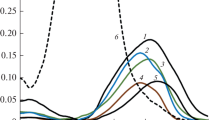Summary
It is demonstrated elsewhere that analytical results, collected for environmental studies, must be consistent and validated in order to allow a correct statistical processing. Here, method validation is presented, and, while it requires a lot of statistics, it is a field where chemometrics have been successfully applied. A very interesting approach for method validation and laboratory evaluation is interlaboratory study. But, the classical theoretical background of repeatability and reproducibility may be insufficient to extract all necessary information, as it is based on a univariate model, whereas a multivariate approach would be more helpful.
The basic principles of interlaboratory studies and the ISO 5725 standard model are explained as it is a recognized technique for assessing method precision and trueness. In that context, measurement is split into three parts: the hypothetical true value of the sample, the bias of the laboratory (systematic error) and the experimental error (random error). From this model, two criteria are developed in order to estimate the precision of the method: the repeatability and the reproducibility, respectively noted r and R. In addition the principles of accepted tests for rejecting outliers are presented as well as some complementary applications of repeatability and reproducibility for comparing and selecting methods. The importance of using a graphical technique for interpreting the results of interlaboratory studies is also underlined as a recommended way to make decisions.
In conclusion a sophisticated example based on the analysis of mono and disaccharides by HPLC, involving 20 laboratories on 12 food samples is presented. It demonstrates that some criticism can be made of the traditional ISO 5725 standard. For example, the ANOVA model is extended for bias component decomposition. It shows that the computational method used to quantify the analyte (based on the peak area or the peak height) is very influential in some cases.
Although the primary goal of the ISO 5725 standard was to compute the precision for one method, it is also applicable to individual laboratory evaluation, using different statistics which are explained and illustrated. But laboratory ranking is much more evident when using multivariate statistical methods. Multiple Correspondence Factor Analysis is presented in detail and applied to a collaborative study on nitrates. When applying this technique, an appreciable loss of information subsequent to the binary transformation of raw data can be suspected. An optimal algorithm is presented that gives very interesting results.
Besides method validation, proficiency tests are used to evaluate the method trueness. This is obtained by comparing individual laboratory results to the conventional reference value of the sample. Different algorithms (parametric and non-parametric) classically used to compute the reference value are compared. It shows that the lack of standardization may lead to important discrepancies. On the other hand some guidelines are illustrated on a practical example for the study of sample homogeneity. For this application, four institutes collaborated on the study, including about 600 laboratories, and about 3 300 results were collected.
However, method validation raises the question of traceability in analytical chemistry. There is an evident lack of certified reference materials in comparison to the international standards used for physical measurements. It is difficult to guess how this situation will improve, but ring tests can be an element for ascertaining the metrological quality of laboratories and analytical methods. It must be underlined that standardization will be a key principle in defining recognized statistical techniques.
Access this chapter
Tax calculation will be finalised at checkout
Purchases are for personal use only
Preview
Unable to display preview. Download preview PDF.
Similar content being viewed by others
Abbreviations
- EquationSource% MathType!MTEF!2!1!+- % feaagCart1ev2aaatCvAUfeBSjuyZL2yd9gzLbvyNv2CaerbuLwBLn % hiov2DGi1BTfMBaeXatLxBI9gBaerbd9wDYLwzYbItLDharqqtubsr % 4rNCHbGeaGqiVu0Je9sqqrpepC0xbbL8F4rqqrFfpeea0xe9Lq-Jc9 % vqaqpepm0xbba9pwe9Q8fs0-yqaqpepae9pg0FirpepeKkFr0xfr-x % fr-xb9adbaqaaeGaciGaaiaabeqaamaabaabaaGcbaGabmiEayaary % aaraaaaa!3720!]]</EquationSource><EquationSource Format="TEX"><![CDATA[$$\bar \bar x$$ :
-
estimate of inter-laboratory or gross average
- EquationSource% MathType!MTEF!2!1!+- % feaagCart1ev2aaatCvAUfeBSjuyZL2yd9gzLbvyNv2CaerbuLwBLn % hiov2DGi1BTfMBaeXatLxBI9gBaerbd9wDYLwzYbItLDharqqtubsr % 4rNCHbGeaGqiVu0Je9sqqrpepC0xbbL8F4rqqrFfpeea0xe9Lq-Jc9 % vqaqpepm0xbba9pwe9Q8fs0-yqaqpepae9pg0FirpepeKkFr0xfr-x % fr-xb9adbaqaaeGaciGaaiaabeqaamaabaabaaGcbaGabmiEayaaia % aaaa!3700!]]</EquationSource><EquationSource Format="TEX"><![CDATA[$$\tilde x$$ or EquationSource% MathType!MTEF!2!1!+- % feaagCart1ev2aaatCvAUfeBSjuyZL2yd9gzLbvyNv2CaerbuLwBLn % hiov2DGi1BTfMBaeXatLxBI9gBaerbd9wDYLwzYbItLDharqqtubsr % 4rNCHbGeaGqiVu0Je9sqqrpepC0xbbL8F4rqqrFfpeea0xe9Lq-Jc9 % vqaqpepm0xbba9pwe9Q8fs0-yqaqpepae9pg0FirpepeKkFr0xfr-x % fr-xb9adbaqaaeGaciGaaiaabeqaamaabaabaaGcbaGabmiEayaaia % aaaa!3700!]]</EquationSource><EquationSource Format="TEX"><![CDATA[$$\tilde x$$ 0.5 :
-
median of data set
- EquationSource% MathType!MTEF!2!1!+- % feaagCart1ev2aaatCvAUfeBSjuyZL2yd9gzLbvyNv2CaerbuLwBLn % hiov2DGi1BTfMBaeXatLxBI9gBaerbd9wDYLwzYbItLDharqqtubsr % 4rNCHbGeaGqiVu0Je9sqqrpepC0xbbL8F4rqqrFfpeea0xe9Lq-Jc9 % vqaqpepm0xbba9pwe9Q8fs0-yqaqpepae9pg0FirpepeKkFr0xfr-x % fr-xb9adbaqaaeGaciGaaiaabeqaamaabaabaaGcbaGabmiEayaaia % aaaa!3700!]]</EquationSource><EquationSource Format="TEX"><![CDATA[$$\tilde x$$ 0.25 :
-
first quartile
- EquationSource% MathType!MTEF!2!1!+- % feaagCart1ev2aaatCvAUfeBSjuyZL2yd9gzLbvyNv2CaerbuLwBLn % hiov2DGi1BTfMBaeXatLxBI9gBaerbd9wDYLwzYbItLDharqqtubsr % 4rNCHbGeaGqiVu0Je9sqqrpepC0xbbL8F4rqqrFfpeea0xe9Lq-Jc9 % vqaqpepm0xbba9pwe9Q8fs0-yqaqpepae9pg0FirpepeKkFr0xfr-x % fr-xb9adbaqaaeGaciGaaiaabeqaamaabaabaaGcbaGabmiEayaaia % aaaa!3700!]]</EquationSource><EquationSource Format="TEX"><![CDATA[$$\tilde x$$ 0.75 :
-
last quartile
- ̄ j :
-
estimate of laboratory mean
- EquationSource% MathType!MTEF!2!1!+- % feaagCart1ev2aaatCvAUfeBSjuyZL2yd9gzLbvyNv2CaerbuLwBLn % hiov2DGi1BTfMBaeXatLxBI9gBaerbd9wDYLwzYbItLDharqqtubsr % 4rNCHbGeaGqiVu0Je9sqqrpepC0xbbL8F4rqqrFfpeea0xe9Lq-Jc9 % vqaqpepm0xbba9pwe9Q8fs0-yqaqpepae9pg0FirpepeKkFr0xfr-x % fr-xb9adbaqaaeGaciGaaiaabeqaamaabaabaaGcbaGabmiEayaary % aaraaaaa!3720!]]</EquationSource><EquationSource Format="TEX"><![CDATA[$$\bar \bar x$$k:
-
general average for level k
- σ2 i :
-
expected laboratory variance
- σ2 L :
-
expected interlaboratory variance
- σ2 r :
-
expected intralaboratory variance
- β i :
-
expected laboratory bias
- εik :
-
expected random error
- μ :
-
theoretical true value of the sample
- b i :
-
observed laboratory bias
- CM Lk :
-
inter-laboratory mean sum of squares for level k
- e ij :
-
observed random error made on
- f :
-
weighing factor
- EquationSource% MathType!MTEF!2!1!+- % feaagCart1ev2aaatCvAUfeBSjuyZL2yd9gzLbvyNv2CaerbuLwBLn % hiov2DGi1BTfMBaeXatLxBI9gBaerbd9wDYLwzYbItLDharqqtubsr % 4rNCHbGeaGqiVu0Je9sqqrpepC0xbbL8F4rqqrFfpeea0xe9Lq-Jc9 % vqaqpepm0xbba9pwe9Q8fs0-yqaqpepae9pg0FirpepeKkFr0xfr-x % fr-xb9adbaqaaeGaciGaaiaabeqaamaabaabaaGcbaGabmiAayaaDa % aaaa!3705!]]</EquationSource><EquationSource Format="TEX"><![CDATA[$$\underset{\raise0.3em\hbox{$\smash{\scriptscriptstyle-}$}}{h} $$ :
-
Mandel’s statistic for trueness
- I :
-
interquartile
- EquationSource% MathType!MTEF!2!1!+- % feaagCart1ev2aaatCvAUfeBSjuyZL2yd9gzLbvyNv2CaerbuLwBLn % hiov2DGi1BTfMBaeXatLxBI9gBaerbd9wDYLwzYbItLDharqqtubsr % 4rNCHbGeaGqiVu0Je9sqqrpepC0xbbL8F4rqqrFfpeea0xe9Lq-Jc9 % vqaqpepm0xbba9pwe9Q8fs0-yqaqpepae9pg0FirpepeKkFr0xfr-x % fr-xb9adbaqaaeGaciGaaiaabeqaamaabaabaaGcbaGabmiAayaaDa % aaaa!3705!]]</EquationSource><EquationSource Format="TEX"><



